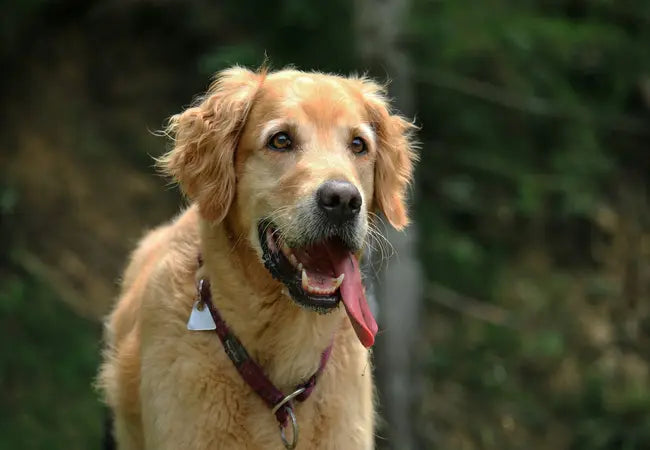2025 Vet Guide: Why Do Dogs Pant? Understanding Normal vs. Problematic Panting 🐶💧

In this article
2025 Vet Guide: Why Do Dogs Pant? Understanding Normal vs. Problematic Panting 🐶💧
By Dr. Duncan Houston BVSc
Panting is a normal and essential cooling mechanism for dogs, but it can also signal underlying issues. Learn to tell when panting is routine and when it needs veterinary investigation. 🛡️
🔍 1. Why Dogs Pant (Normal Reasons)
- Heat regulation: Dogs lack effective sweat glands, so they pant to evaporate moisture internally and cool down.
- Physical exertion: After exercise, panting helps raise oxygen intake—should ease within minutes.
- Excitement or happiness: Panting often accompanies joyful arousal, like greeting owners or playtime.
- Stress or anxiety: Fearful situations (thunderstorms, vet visits, car rides) commonly trigger panting.
⚠️ 2. When Panting Becomes Concerning
Watch for these warning signs—seek vet care if you observe:
- Panting in a calm, cool environment, without recent exertion.
- Heavy, labored breathing or extended panting at rest.
- Panting paired with signs like wheezing, coughing, vomiting, diarrhea, lethargy, or collapse.
- Heatstroke indicators: bright/red gums, disorientation, drooling, rapid heartbeat.
🩺 3. Medical Causes of Excessive Panting
- Pain or discomfort: Often shows as panting plus guarding, limping, or sensitivity.
- Obesity: Extra weight stresses the body, leading to panting even at rest.
- Heart disease: Heart failure or heartworm can impair oxygenation, causing panting and coughing.
- Respiratory illness: Conditions like pneumonia, collapsed trachea, asthma, or bronchitis may present with panting and rapid breathing.
- Laryngeal paralysis: Noisy inhalation, exercise intolerance, and panting—common in older large breeds.
- Cushing’s disease: Elevated cortisol increases respirations; look for accompanying thirst, pot belly.
- Drugs: Steroids (prednisone) frequently cause increased panting.
- Heatstroke: Life-threatening overheating—the most urgent concern.
🧪 4. Diagnosing the Cause
- Full physical exam, including auscultation of lungs and heart.
- Bloodwork, including CBC, organ profiles, and thyroid/cortisol panels if endocrine disease is suspected.
- Chest X‑rays to evaluate lungs, heart size, and airway structure.
- Advanced airway exams (e.g., endoscopy for laryngeal or tracheal issues).
- Allergy or stress assessments, if non‑medical causes are suspected.
✅ 5. Supportive Care & Prevention
- Maintain a clean, indoor environment with cool air and shade—avoid hot pavement during danger hours.
- Ensure fresh water access and allow cool-down after exercise.
- Address pain, weight, or disease according to vet guidance.
- Use harnesses instead of collars for respiratory or airway-compromised dogs.
- Keep vaccinations up to date to prevent kennel cough.
📱 6. Tools to Monitor & Support
- Ask A Vet: Fast remote advice for breathing distress or panting concerns.
- Woopf: Logs for panting episodes, medication, water intake, and vet visits.
- Purrz: Track pant frequency, triggers (heat, stress), and improvement after interventions.
📚 FAQ
Q: My dog pants after a walk—normal?
Yes—as long as panting occurs during activity and stops with rest and cooling.
Q: When is panting heatstroke?
Look for frantic panting with drooling, red gums, vomiting, or collapse—treat as an emergency.
Q: My brachycephalic dog pants a lot—worry?
They already struggle to cool; monitor for noisy breathing, lethargy, or overheating, especially in summer.
💬 Pet-Owner Insight
> “After our senior pug started panting heavily inside, the vet identified early laryngeal paralysis. With weight management and a harness, his breathing improved.”
🏁 Final Thoughts from Dr Houston
Panting is a normal and essential way for dogs to stay cool—but when it’s excessive or unexplained, it's a signal to act. With careful monitoring, a systematic vet approach, and lifestyle modifications, most dogs can breathe with comfort and confidence. And with Ask A Vet, Woopf, and Purrz, you're empowered to respond—keeping your dog healthy and happy into 2025 and beyond. 💙
Download the Ask A Vet app for fast guidance on breathing concerns, tracking symptoms, and wellness planning. 📱
AskAVet.com – Supporting every breath your dog takes.






